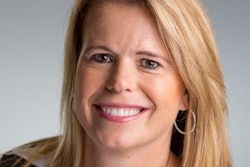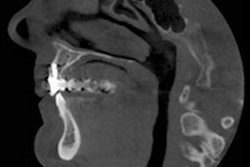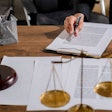
Summer months tend to have more no-shows, but longer appointments are more likely to be canceled, according to the results of a new study. The researchers hope their findings will help create solutions that target those most likely to not attend appointments.
To identify factors that affected no-show and cancellation rates, the researchers used practice-based population health data (PBPH) and parsed information from hundreds of thousands of dental appointments. They identified multiple factors that significantly affected the likelihood that a patient will attend an appointment and published their findings in Public Health (July 21, 2017).
"The current study investigated factors associated with appointment-keeping in an American university's dental clinic system with the goal of exploring PBPH's potential to improve attendance," wrote the authors, led by Adrienne Lapidos, PhD, from the University of Michigan School of Social Work.
Population health data
Canceled and no-show appointments can be problematic for many different types of dental practices and, therefore, are areas ripe for research. Although previous studies have looked into correlations between demographic and socioeconomic factors and missed appointments, the researchers saw an opportunity to use practice-based population health data, which had not previously been used to identify patients who may be at-risk for missing appointments.
The researchers began by using deidentified data from the dental clinic system of an unspecified, large American university. The data they obtained contained more than 180,000 appointments for nearly 46,000 patients and included demographic information, such as age and sex, as well as appointment information, such as length and date.
The data were then parsed to identify whether certain factors were attributed with canceled and no-show appointments. They identified seven areas that impacted whether an appointment was attended and described five of those: appointment length, time of year, appointment time, patient age, and insurance type.
1. Appointment length
“Canceled and failed appointments followed distinct or even opposite patterns.”
Appointment length proved to have a significant impact on both cancellations and no-shows, the researchers found. Appointments scheduled to take more than an hour were more likely to be canceled than shorter appointments, and nearly 30% of appointments more than two hours long were canceled, they found.
When it came to patients who did not show up, however, shorter appointments that were scheduled to last less than an hour were more likely to have no-shows than longer appointments. About 10% of appointments less than one hour in length were no-show appointments, the research showed.
2. Time of year
In addition, time of year significantly affected no-shows and cancellations. The winter months had the lowest attendance rate with just 69% of appointments attended and the highest cancellation rate with nearly a quarter of appointments canceled.
Meanwhile, summer months had the highest no-show rate. During the hottest time of the year, 7% of patients did not show up for their scheduled appointment.
3. Appointment time
Early morning appointments are more likely to have no-shows, while later appointments are more likely to be canceled, the researchers found. Patients with appointments between 8 a.m. and 10 a.m. were more likely to be no-shows than those with appointments at later times, but appointments after 10 a.m. were more likely to be canceled than those earlier in the day.
4. Patient age
Generally, the older the patients, the less likely they are to miss a scheduled appointment. Patients age 65 and older were less likely to both cancel an appointment and not show up to an appointment than adults ages 26 to 64. Conversely, patients age 10 and younger were more likely to cancel an appointment and not show up to an appointment than adults.
Meanwhile, young adults and adolescents fell in between the other two groups. Young adults ages 18 to 25 were less likely to cancel an appointment than their older peers, but they were also more likely to be no-shows. The trend was reversed, though, for adolescents ages 11 to 17, who were more likely to cancel appointment but less likely to be no-shows.
5. Type of insurance
Finally, like other studies have found, type of insurance significantly impacted no-shows and cancellations. Medicaid and uninsured patients were both more likely to cancel and more likely to not show up to appointments than those with other types of insurance.
Parsing the data
The authors found it particularly interesting that the trends were sometimes inverted for canceled and no-show appointments, and they believe the findings suggest different approaches to help prevent missed appointments may be needed.
"We also found among certain categories, canceled and failed appointments followed distinct or even opposite patterns, suggesting that different psychological issues underpin these appointment-keeping behaviors, and suggesting that different types of preventive measures could be designed for patients at risk for each," they wrote.
The model was limited by the data they had available, which didn't include some demographic and socioeconomic factors known to be associated with keeping appointments, such as income and distance from clinic. The authors also noted that the model they used only explained a small variance for each factor, but they still believe their findings are useful and hope to see future studies use practice-based population health data.
"Despite this limitation, our work uncovered statistically significant results that suggest directions for future research, with small but statistically significant differences within all seven tested variables," they wrote.



















